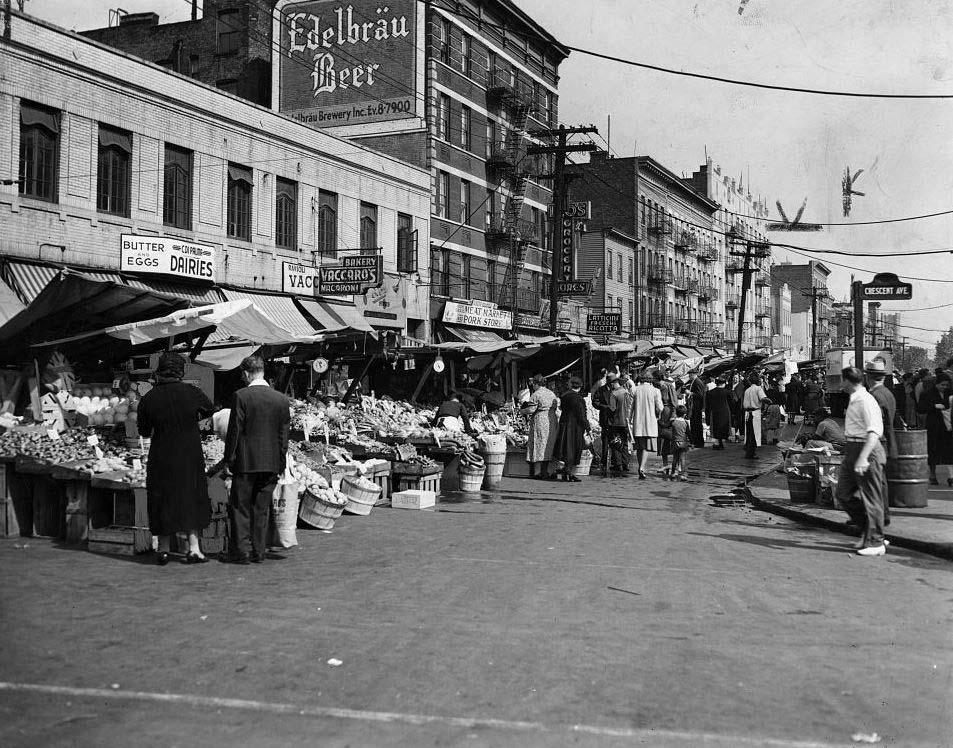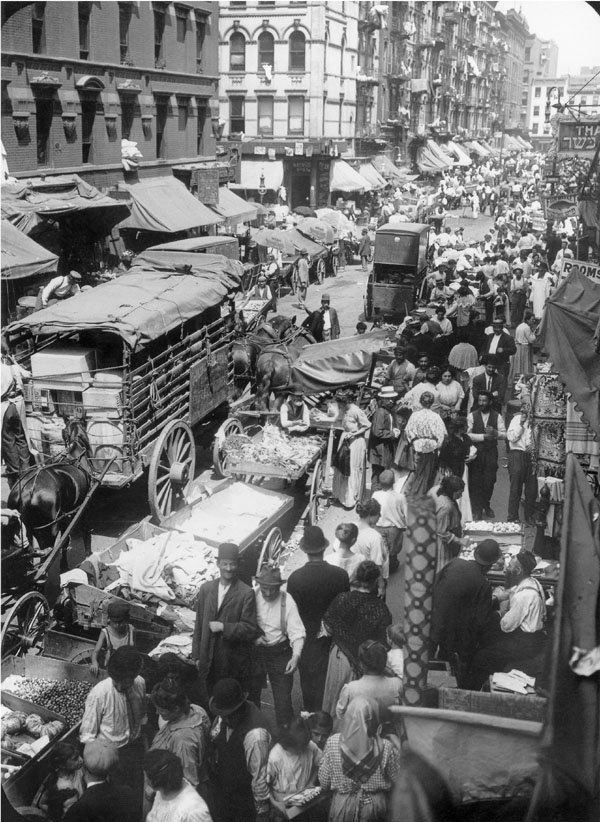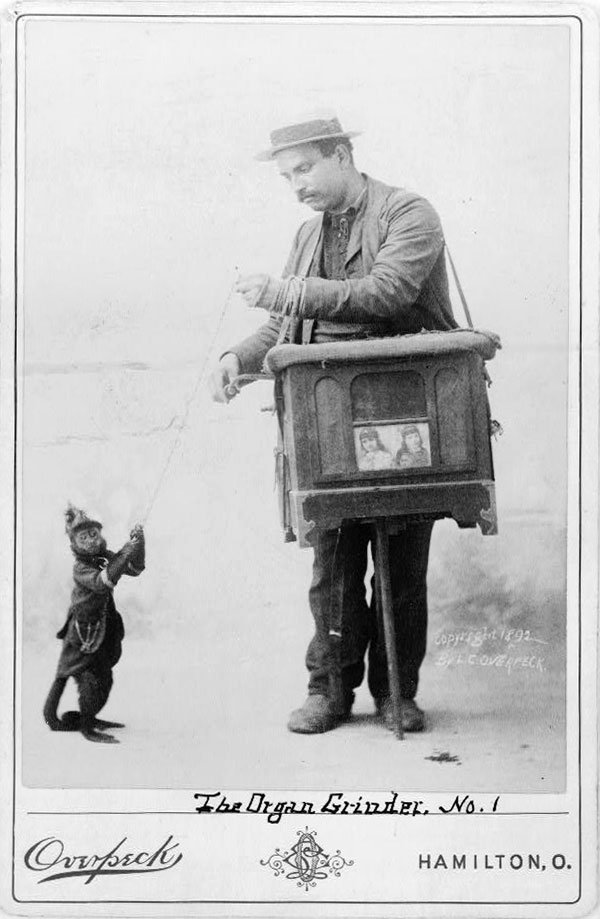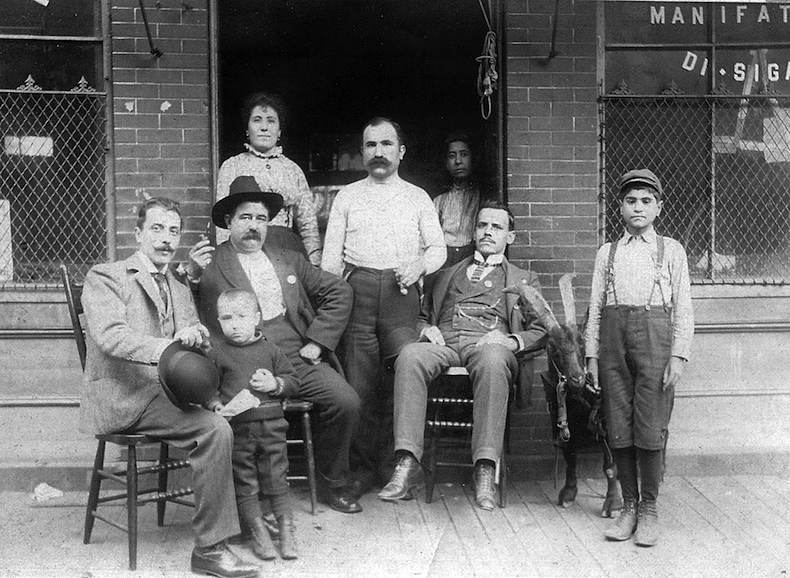The origins of Little Italy in New York City are simultaneously shrouded in the past and rooted in the present. Originally located as a large 30 block section of the Lower East Side, Little Italy has now shrunk to only a couple of blocks sequestered around Mulberry Street.
Although waves of immigration from Italian shores created what we now deem Little Italy, the streets in between Worth Street and Houston Street originally sheltered Lenape tribes, Dutch settlers, and everyone else who called those streets home.  PC: NY World Telegraph and Sun in Library of Congress
PC: NY World Telegraph and Sun in Library of Congress
Over two centuries ago, waves of Italians immigrated from their homeland to capitalize on the growing industrial age in America. Italy continued to suffer in the late 1800s from droughts that destroyed the Southern farmlands and encouraged cholera, malaria, and parasites. With the Italian economy struggling in the aftermath of conflict, agricultural stagnation, and burdensome taxes, Italian young men moved to America in an attempt to make and send money back to their families still living in Europe. Sadly, the domestic and political situations in the 19th century only disintegrated as fascism, the mafia, and corruption encouraged entire families to move permanently to America.
 PC: National Archives and Records Administration
PC: National Archives and Records Administration
The Italians who moved to New York City initially occupied streets within the Lower East Side tenements, along with other immigrants who had settled there for centuries. From 1860 to 1880 at least 68,000 Italians explored New York City life. While many Italians first resided in Lower Manhattan’s Little Italy, others moved out to East Harlem and created a larger Little Italy in the bigger homes and wider streets.
By the Roaring Twenties, at least 390,000 Italians made New York City their home from East Harlem to the Lower East Side. From the outside, Little Italy appeared to be a haven of Italian culture, ranging from language to cuisine. However, Little Italy mirrored its namesake in multiple ways. Just like Italy, the little haven in Manhattan was partitioned into regional loyalties; the Sicilians congregated on Elizabeth Street, the Genovese on Baxter Street, while the Northern Italians occupied Bleecker Street. Ambling through Little Italy in the early 20th century, one would be enveloped in a cacophony of languages, aromas, and laughter that varied street by street, just as it did city by city in Italy.

PC: Library of Congress ‘s Prints and Photographs
As Italians brought their laughs and dreams to America, they also introduced delicious new recipes that quickly won the stomachs and hearts of the entire continent. Chefs and artisans opened food carts, restaurants, bakeries, and more that have lasted to this day. The purported oldest cheese shop resides in Little Italy where they have been serving dairy ingredients since Pina Alleva opened it more than a century ago. As the new flavors and textures of food seeped throughout New York, so did Italian cultural pastimes such as organ grinding and puppet shows to entertain young and old New Yorkers alike.
 PC: The Origin of Organized Crime in America: The New York City Mafia
PC: The Origin of Organized Crime in America: The New York City Mafia
By the late 1930s, Little Italy was 98 percent Italian, although many left to Brooklyn, Staten Island, and other boroughs after World War II for more space. The later half of the 20th century immortalized Little Italy in films that capitalized on the mysterious and enticing world of the mafia. The mafia had traveled with the Italians to America, even as many attempted to escape its reach. The Black Hand, Gambino family, and Genovese family controlled many interactions within the Italian neighborhood, from threats to illegal acts and in between.
Although crime stories are captured in the Godfather and Mean Streets films, even filmed on the same streets, it’s NYPD Italian officer Giuseppe Petrosino who has a park in his name. The influence of the mafia weakened as the NYPD and court system pushed to eradicate the crime syndicate from New York. Currently, the shops and restaurants that mafia members owned and managed have renamed themselves and repainted the walls, yet some traces of a bygone era still remain.
Although Little Italy has shrunk as SoHo and Chinatown have continued to expand, Mulberry Street and its surrounding streets still showcase the enduring impact thousands of Italians made on NYC.




